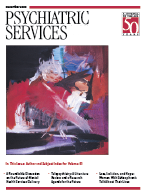This biography of Michael Swango, M.D., by Pulitzer Prize winner James B. Stewart, is not only the chilling story of a psychopathic serial poisoner. It is also a cautionary tale about how the medical profession can at times misguidedly protect its own.
Michael Swango, the favorite son of a doting mother and an often absent, alcoholic, military father, showed great promise at an early age. He excelled in schoolwork, in music, and in athletics. However, from his early days in medical school, it was obvious to some of Swango's classmates that something was wrong. His work was sloppy. Among other things, he mangled his cadaver, and he failed to recognize an X-ray of the heart. At the same time, he regularly commuted 100 miles to work as an emergency medical technician, which was against school regulations.
When students finally raised charges against him because they felt he was not competent to become a physician, Swango managed to win over school administrators with his clean-cut good looks, his boundless energy, and his willingness to work hard to prove himself. When the faculty chose to allow him to graduate despite his poor performance, this first opportunity to remove him from the medical profession was missed.
Swango then became a resident at Ohio State. While he was there, serious questions were raised about whether he had attempted to poison one of his patients by injecting something into her IV line. However, since the main complaints had been raised by a nurse and the patient's elderly roommate, the doctors and administrators minimized the complaints and chose to protect a fellow physician. Once again, the serial killer slipped through the net.
Fascinated by poisons, violent death, and serial killers—which were often compulsive topics of his conversations with others—Dr. Swango managed to continue practicing medicine and killing patients. The law finally caught up with him in 1985 for attempting to poison several coworkers. Incredibly, after serving time for this felony, he went on to continue to practice medicine, both in the United States and in Africa.
Throughout his travels, questionable deaths and charges of poisoning patients dogged him. It was not until he had to stop in the United States to pick up a visa on his way to Saudi Arabia, where he was slated to take up yet another position as a practicing physician, that he was arrested and convicted of falsifying statements and documents related to a previous application for a position at a Veterans Administration hospital in New York.
Although it is rare, thankfully, to find a psychopathic serial killer among the ranks of the medical profession, it is tragically common for doctors to be unwilling to report incompetent physicians to the national data bank, let alone to try to remove them from the medical profession. If the first oath of all physicians is to do no harm, allowing incompetent physicians to practice raises serious moral questions. It also raises malpractice premiums. Patients and doctors alike would be well advised to read Blind Eye and to reconsider the options for protecting medicine from bad practitioners.

